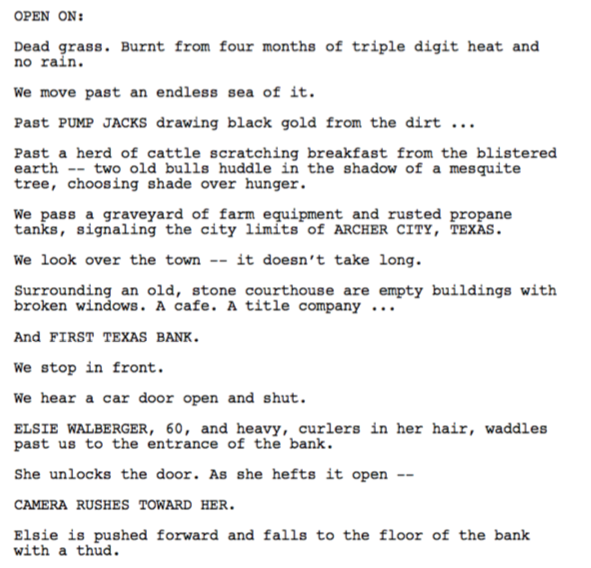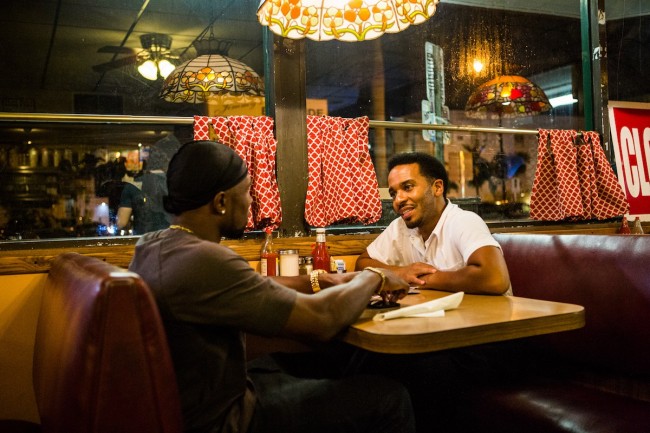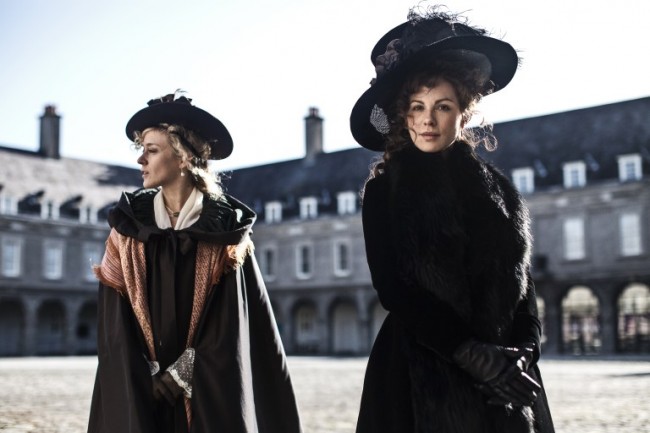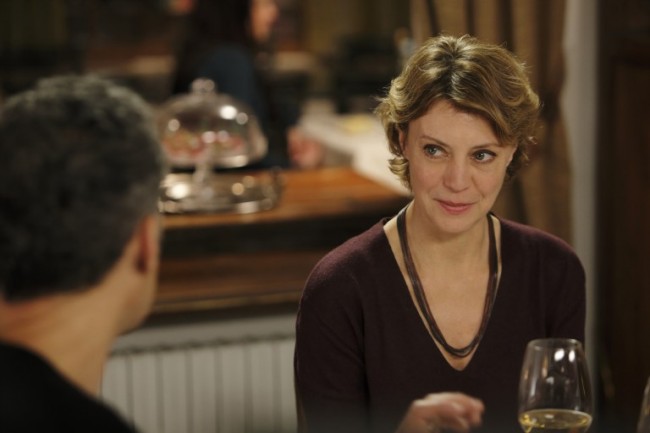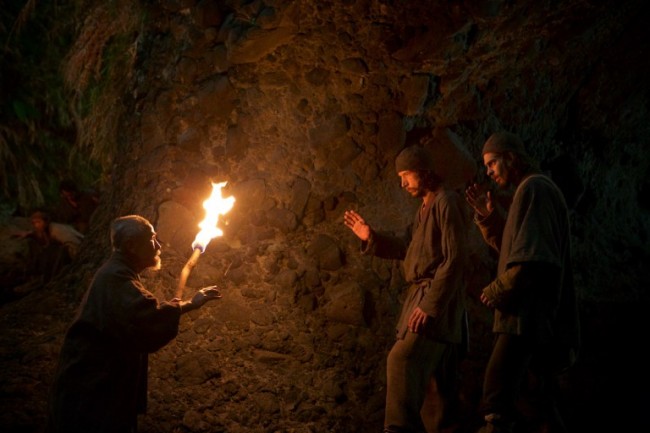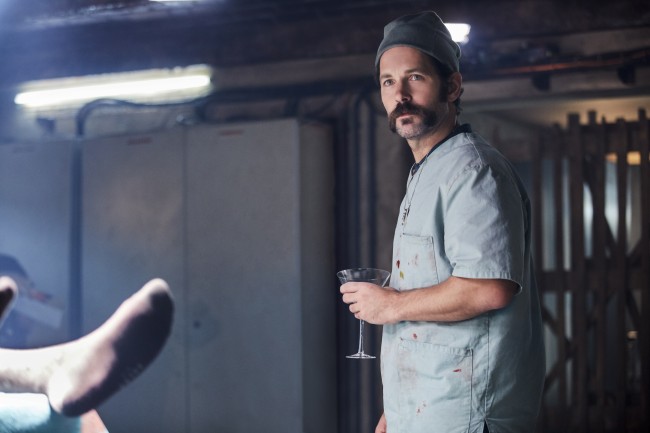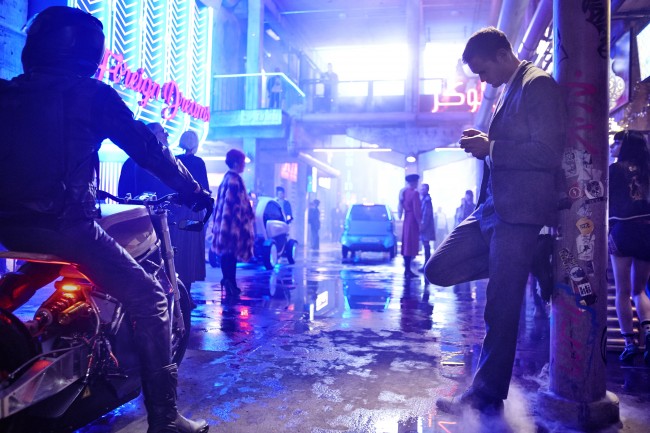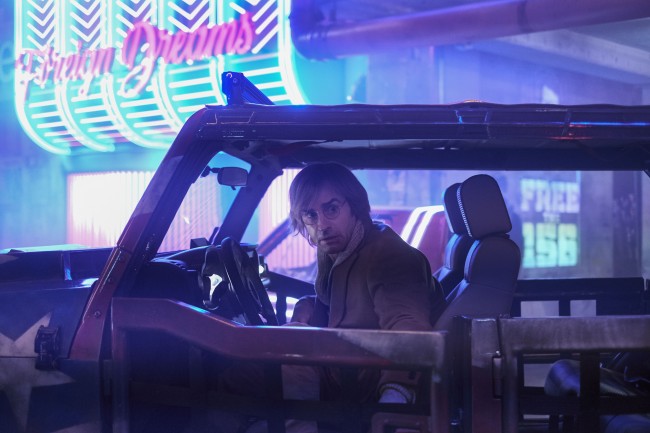Movie City Indie
For Criterion, Carmen Maura on Acting for Comedy and Drama (1’29”)
Trailering Terence Malick’s SONG TO SONG (1’37”)
Could a film be brilliant self-parody as well as lucid dream? So many gestures the most intolerant critics criticized about Terrence Malick’s Knight of Cups are front-and-center here. (As a trailer, it’s both tender and confrontational: Don’t like where I’ve gone? I haven’t gone anywhere.)
Keith Maitland’s TOWER On Independent Lens

Keith Maitland’s intricately conceived and executed Tower, a hybrid, mixed-media documentary, takes advantage of the versatility and cost-effectiveness of animation to reflect on American’s first mass shooting at a school, from the University of Texas Tower on August 1, 1966, when thirteen were murdered and thirty wounded in ninety-six minutes. As with other experiments in the form, like Ari Folman’s Waltz with Bashir, rotoscoped animation has the effect of bringing us both closer and removing us from the events, which are also shown in archival footage. (Richard Linklater’s Austin-made Waking Life is, of course, another important reference.)
[A clip: “Pregnant teenager remembers the moment she was shot.“]
The mingling of real and unreal, depicting the events via first-person testimonies is dreamy, and it’s a nightmare. It’s also emotionally shattering, a feat of imagination, but also a feat of empathy. Animation allows the witnesses we hear to also remain the age onscreen they were fifty years ago, innocent, hopeful, not yet under attack. Elemental yet expressionistic, Tower is an admirable attainment, a broadside from the solar plexus, and the powerhouse ending, partially narrated by Walter Cronkite commenting in the day, is magnificently measured. So much tenderness! So much humanity. Those ten minutes so heartfelt, affirmative, I cried.
[Debuts Tuesday, 14 February at 10pm in most markets.]
Download 9 of the 10 Oscar-Nominated Screenplays
ADAPTED
Arrival.
Fences.
Hidden Figures.
Lion.
ORIGINAL
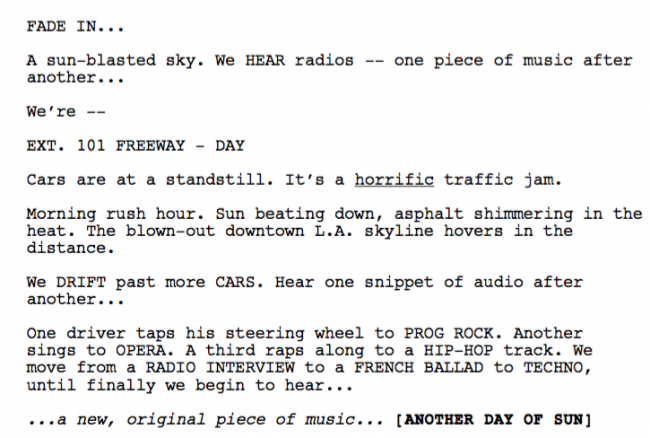
La La Land.
The Lobster. (have a press kit!)
 Manchester-by-the-Sea.
Manchester-by-the-Sea.
20th Century Women.
TONI ERDMANN Writer-Director Maren Ade’s BAFTA Screenwriters Lecture (68’48”)
A 1973 Minneapolis Show On The Shooting Of The “Mary Tyler Moore” Opening (21’43”)
[Via Larry Wright @refocusedmedia]
FIFTY-PLUS FILMS FOR 2016

In 2016, I saw as many movies as most years (even if when I couldn’t review them all on first release), and I took an additional month to catch up and make room for some second and third look-sees. May the coming year reveal distribution and exhibition creativity to match the grand diversity of movies in 2016.
Earlier lists: Newcity and Indiewire. Documentaries.
1. Moonlight (Barry Jenkins) Of course, you can’t forget for a second the color of Chiron’s skin, but Jenkins’ gift is to suggest, to pinpoint inner struggle through the surroundings of his characters, from costume design to scene settings to the setting sun. Consider the thin and thick wallops of blue that he and cinematographer James Laxton apply gloriously to the screen. Blue, blue, electric blue. Lazy blue. Electrified blue. Wash of water. Ice-blue buzz of fluorescence. Azul, azure, lapis lazuli, teal, turquoise, sea, seafoam, sky, cerulean, cobalt: these are elemental hues and shades of the dynamically alive yet bruised palette of Moonlight. And skin, faces, limbs: gleaming, glistening skin of hue in humidity. Review.
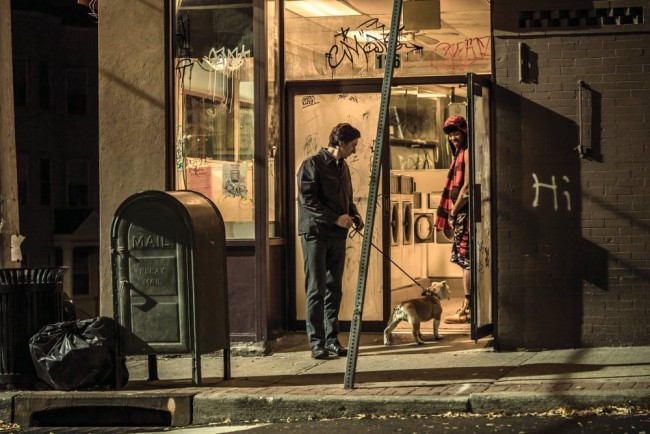 1. Paterson (Jim Jarmusch) Routine is what keeps him from harm. He wakes in the arms, or the embrace, or abed the warmth of his beloved, asleep before she begins her days of fevered if unfocused productivity. Laura is a fury of good unrealized, a muse, sure, but also someone who does not challenge his gentle somnambulism, peripatetic, circling, hardly a ghost. She’s not foolish and far from a laugh: she’s gifted with talents but without the routine Paterson has to drift from fugue to lyric and back again. Laura’s not all black-and-white, she has her own drive (and mania) unfiltered, untreated (by friend or pharma, by confession or Clonazepam). They’re twinned, too: two artists, not artists manqué, but productive, seemingly satisfied individuals. Laura’s eyes light up like Paterson’s: look at this simple world, look at the patterns we apply upon perception. Review.
1. Paterson (Jim Jarmusch) Routine is what keeps him from harm. He wakes in the arms, or the embrace, or abed the warmth of his beloved, asleep before she begins her days of fevered if unfocused productivity. Laura is a fury of good unrealized, a muse, sure, but also someone who does not challenge his gentle somnambulism, peripatetic, circling, hardly a ghost. She’s not foolish and far from a laugh: she’s gifted with talents but without the routine Paterson has to drift from fugue to lyric and back again. Laura’s not all black-and-white, she has her own drive (and mania) unfiltered, untreated (by friend or pharma, by confession or Clonazepam). They’re twinned, too: two artists, not artists manqué, but productive, seemingly satisfied individuals. Laura’s eyes light up like Paterson’s: look at this simple world, look at the patterns we apply upon perception. Review.
3. Knight of Cups (Terrence Malick) Guilt as gossamer, memory as wraith, woman as other, love as labor lost: Terrence Malick’s seventh released feature, years in the shaping, is dense yet featherlight, elusive yet specific, a wonderment comprising one once-worldly man’s memories, the tide of a single life pummeled by remorseless undertow. (“I think he’s the last living silent filmmaker,” Jessica Chastain told a Toronto audience recently. “His voice-overs are like intertitles.”) Review.
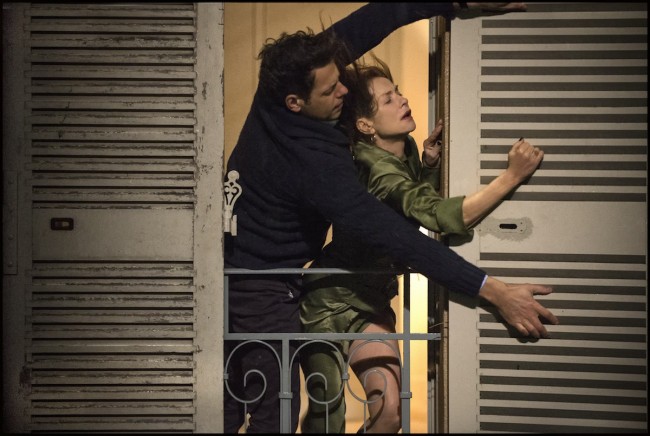 4. Elle (Paul Verhoeven) The powers that be denied us Paul Verhoeven’s Hitler movie and then denied us his Jesus movie (the research for which became a book). For the sins of those fathers, Verhoeven and Isabelle Huppert—especially, particularly Huppert, at the height of her monstrous power to delight—gives us this tremendously accomplished psychological thriller. Huppert plays Michèle, head of a video game company bringing another violent game to market, and she’s as direct in matters emotional as business. There are no questions about her sexual agency. Verhoeven opens with a crucial scene, when Michèle is attacked by a stranger in her own home. How does Michèle react? She engages in ways small, then large, then searches for her assailant. And we learn more about Michèle… and then more. Michèle is multitudes. Michèle is fascinated by the play of power, of reversals, of upstaging, of further reversals. Review.
4. Elle (Paul Verhoeven) The powers that be denied us Paul Verhoeven’s Hitler movie and then denied us his Jesus movie (the research for which became a book). For the sins of those fathers, Verhoeven and Isabelle Huppert—especially, particularly Huppert, at the height of her monstrous power to delight—gives us this tremendously accomplished psychological thriller. Huppert plays Michèle, head of a video game company bringing another violent game to market, and she’s as direct in matters emotional as business. There are no questions about her sexual agency. Verhoeven opens with a crucial scene, when Michèle is attacked by a stranger in her own home. How does Michèle react? She engages in ways small, then large, then searches for her assailant. And we learn more about Michèle… and then more. Michèle is multitudes. Michèle is fascinated by the play of power, of reversals, of upstaging, of further reversals. Review.
 4. My Golden Days (Arnaud Desplechin) The last third of the movie is heartstoppingly quick and accurate in slightest gestures, the readiest emotions, in the couple’s romantic misalignments. This is ravishing cinematic poetry, blooming with simplest sentiment in the most complicated instants. Review.
4. My Golden Days (Arnaud Desplechin) The last third of the movie is heartstoppingly quick and accurate in slightest gestures, the readiest emotions, in the couple’s romantic misalignments. This is ravishing cinematic poetry, blooming with simplest sentiment in the most complicated instants. Review.
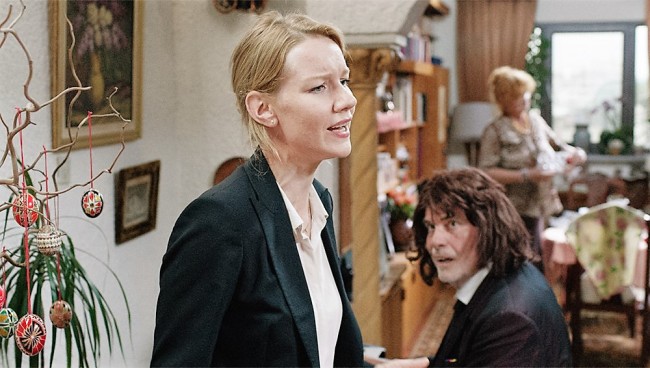 6. Toni Erdmann (Maren Ade) The grace of Ade’s filmmaking across its glorious, necessary 162-minute running time is that Ines at one just-perceptible moment decides the game is on. Whatever fresh horror Toni thrusts into her way, she then absorbs and attempts to counter. There are many comic setpieces, from family terror to absurd yet emotionally fluent reactions that any contemporary comic filmmaker should envy. And one particular turn, that involves Ines and Toni and an ecstatic performance of a particular popular song is awe-inspiring for its entire delicious, delirious five or six or seven minutes. That’s the scene where the tender but never soft Toni Erdmann takes a flying leap from idiosyncratic to indelible. Review (posts 1/24).
6. Toni Erdmann (Maren Ade) The grace of Ade’s filmmaking across its glorious, necessary 162-minute running time is that Ines at one just-perceptible moment decides the game is on. Whatever fresh horror Toni thrusts into her way, she then absorbs and attempts to counter. There are many comic setpieces, from family terror to absurd yet emotionally fluent reactions that any contemporary comic filmmaker should envy. And one particular turn, that involves Ines and Toni and an ecstatic performance of a particular popular song is awe-inspiring for its entire delicious, delirious five or six or seven minutes. That’s the scene where the tender but never soft Toni Erdmann takes a flying leap from idiosyncratic to indelible. Review (posts 1/24).
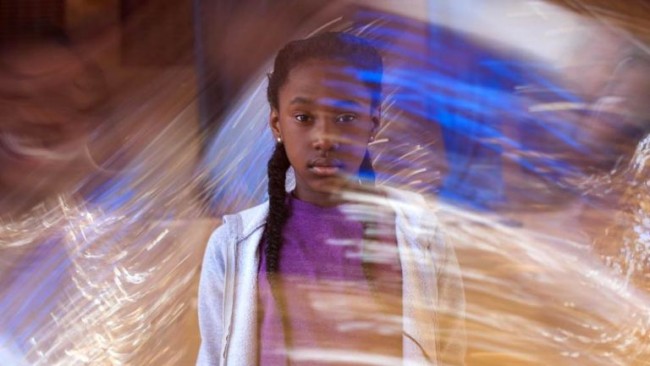 7. The Fits (Anna Rose Holmer) Toni learns by watching. Toni learns by doing. Rhythms, then routines, establish, recur. Toni’s an outsider, working inward, realizing her self, her potential, her power as the camera observes, enables, ennobles her modest, yet major journey. The dreamy, joyous is elegance and simplicity supreme. Review.
7. The Fits (Anna Rose Holmer) Toni learns by watching. Toni learns by doing. Rhythms, then routines, establish, recur. Toni’s an outsider, working inward, realizing her self, her potential, her power as the camera observes, enables, ennobles her modest, yet major journey. The dreamy, joyous is elegance and simplicity supreme. Review.
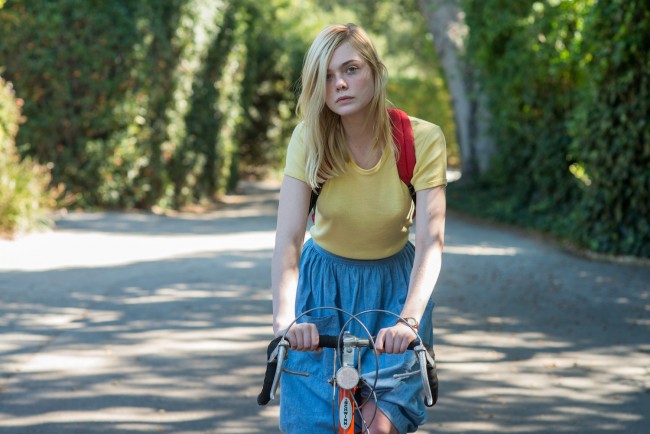 8. 20th Century Women (Mike Mills) Mills’ screenplay and his images are equally mysterious, with emotional weight that accrues alongside the ineffable charm of his performers. Bening expresses complexity in each and every contradictory scrap of behavior: her features do not sit still even when sitting stock-still. (Mills is also adroit at refining the inherent charisma of Fanning and Gerwig.) Review.
8. 20th Century Women (Mike Mills) Mills’ screenplay and his images are equally mysterious, with emotional weight that accrues alongside the ineffable charm of his performers. Bening expresses complexity in each and every contradictory scrap of behavior: her features do not sit still even when sitting stock-still. (Mills is also adroit at refining the inherent charisma of Fanning and Gerwig.) Review.
9. Hell or High Water (David Mackenzie) The script’s awareness of the dearth of economic opportunity, not only for released prisoners and returned veterans, but for anyone living in these scrub towns, as well as the bond of leased land and entrenched money, positions its ambition squarely in the lap of Robert Towne’s 1974 screenplay Chinatown. (The superficially unassuming narrative of Hell Or High Water is just that ambitious, aiming in its own offhand way toward the heights of the American film pantheon.) And it doesn’t hurt that the cinematography of longtime collaborator Giles Nuttgens is lustrous and dusky in equal measure, capturing dying and dead towns and vast landscape with the acuity of Antonioni’s Zabriskie Point or as a less languorous, less brightly-colored parallel to Wim Wenders and Robby Müller’s Paris, Texas. Review.
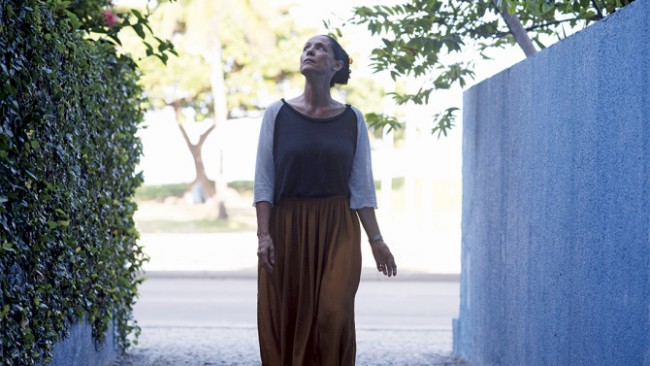 10. Aquarius (Kleber Mendonça Filho) A magnificent, timeless performance by Sonia Braga as a former music critic facing developers who want her out of her Recife home. Local politics kept Aquarius from Brazil’s Foreign Language Oscar submission, and a foreshortened streaming window demolished its box office chances. But it’s vivid, virtuous, even thrilling work.
10. Aquarius (Kleber Mendonça Filho) A magnificent, timeless performance by Sonia Braga as a former music critic facing developers who want her out of her Recife home. Local politics kept Aquarius from Brazil’s Foreign Language Oscar submission, and a foreshortened streaming window demolished its box office chances. But it’s vivid, virtuous, even thrilling work.
11. Kaili Blues (Gan Bi) “Astonishing first film about a geography of the soul. Delineated by time, trains and regret,” writes Guillermo del Toro. “Contains a 40-minute single shot that traces a map of Kaili with poetic prodigious filmic chops. Why? Cinema. Why? Life.” Jonathan Demme: “What if a brazen first-time filmmaker decided — beyond audaciously — that they didn’t want to cut from one location to another (all quite distant from each other) for about oh, half their new movie, and instead chose to dare to go with one super-duper-transcendental half-hour plus single take? Answer: you wind up with Bi Gan’s absolutely extraordinary Kaili Blues.” From Shelly Kraicer’s invaluable piece in Cinema Scope: “Bi Gan’s art is something completely different. While it is clearly deeply embedded in contemporary culture, its poetry—not its politics—makes meaning. There is something uncanny, something quietly, modestly rapturous about Bi’s world: it’s seemingly grounded in a specific location, circumstance, and personality, while at the same time freely roaming, and not delimited by space, time, and character. We’re in one place—an obscure little corner of small-town China today—and we’re everywhere, unbounded, set free to wander in a single shot, in a dream without limits.”
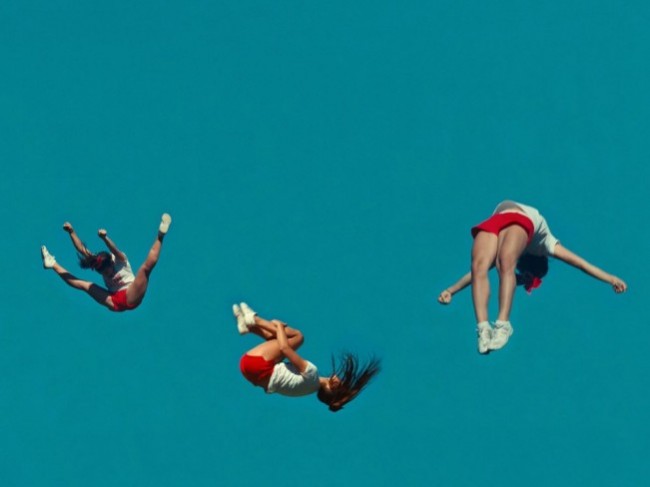 12. Louder Than Bombs (Joachim Trier) Grief eddies, mourning lingers, yet signs of life are everywhere, starting with the opening shot of a father’s finger in his newborn’s tiny paw. Review. Another device is to hold on a character at the end of a scene, not particularly reacting, but just being observed unbeknownst. There are several gorgeous moments like that, including one close-up of Huppert held for a minute or so. Tell me about holding on someone, not particularly reacting, but just being observed unbeknownst. There’s Jesse at the end of the scene with the ex-girlfriend in the hospital, also at the end of the scene where he discovers his mother’s hotel room photos on the last memory card. In editing choices, how much do you work on holding that extra moment? “Yes. Yes. It’s funny that you ask, because this is a big deal for everyone, it’s a big deal for Eskil, who I write with, for the editor, Olivier [Bugge Coutté], and for Jakob, too. We call it a ‘loaded close-up.’ It means that it gives space when something dramatic happens or something is at play, to leave a moment of connectedness with not quite articulated thought in a thought, links the audience to a character, almost like punctuation. Where you think, hmmm, what did that mean for the character, what would it have meant with me? It’s where that space of identification would be unknown in the other. That sounds terribly intellectual, I’ll try to be more specific. The idea of using that interpretative curiosity which is at play in human storytelling and cinema and seeing if those close-ups can create a space for interpretation in the face of the other. It’s something that’s not unique to what we do, but, yeah, it’s interesting, I haven’t answered this question before, you ask great and very specific questions here, I wish I could come up some examples from other filmmakers, but I’m sure this is at play a lot. Look at something like Ozu, he does it differently, sometimes he’s only looking at the members of the family speak around he table. The contemplation of linking in with the listener, or the contemplative parts in heated discussions. It’s very poignant, it’s very powerful. You can even do it with a single character, where an event is going on, and you go to the character in that contemplative moment after. I’m interested in that, but it shouldn’t be overused. Because in a way, you say, here’s something at play, cut to… Nothing! But that nothingness is filled with the human face and therefore you have to then ponder the choices of the character. There’s also a dramaturgical effect involved, of brainy people are leaning a little bit forward in their seats, okay, what’s going on now, what are they thinking, rather than give all the answers.” Interview.
12. Louder Than Bombs (Joachim Trier) Grief eddies, mourning lingers, yet signs of life are everywhere, starting with the opening shot of a father’s finger in his newborn’s tiny paw. Review. Another device is to hold on a character at the end of a scene, not particularly reacting, but just being observed unbeknownst. There are several gorgeous moments like that, including one close-up of Huppert held for a minute or so. Tell me about holding on someone, not particularly reacting, but just being observed unbeknownst. There’s Jesse at the end of the scene with the ex-girlfriend in the hospital, also at the end of the scene where he discovers his mother’s hotel room photos on the last memory card. In editing choices, how much do you work on holding that extra moment? “Yes. Yes. It’s funny that you ask, because this is a big deal for everyone, it’s a big deal for Eskil, who I write with, for the editor, Olivier [Bugge Coutté], and for Jakob, too. We call it a ‘loaded close-up.’ It means that it gives space when something dramatic happens or something is at play, to leave a moment of connectedness with not quite articulated thought in a thought, links the audience to a character, almost like punctuation. Where you think, hmmm, what did that mean for the character, what would it have meant with me? It’s where that space of identification would be unknown in the other. That sounds terribly intellectual, I’ll try to be more specific. The idea of using that interpretative curiosity which is at play in human storytelling and cinema and seeing if those close-ups can create a space for interpretation in the face of the other. It’s something that’s not unique to what we do, but, yeah, it’s interesting, I haven’t answered this question before, you ask great and very specific questions here, I wish I could come up some examples from other filmmakers, but I’m sure this is at play a lot. Look at something like Ozu, he does it differently, sometimes he’s only looking at the members of the family speak around he table. The contemplation of linking in with the listener, or the contemplative parts in heated discussions. It’s very poignant, it’s very powerful. You can even do it with a single character, where an event is going on, and you go to the character in that contemplative moment after. I’m interested in that, but it shouldn’t be overused. Because in a way, you say, here’s something at play, cut to… Nothing! But that nothingness is filled with the human face and therefore you have to then ponder the choices of the character. There’s also a dramaturgical effect involved, of brainy people are leaning a little bit forward in their seats, okay, what’s going on now, what are they thinking, rather than give all the answers.” Interview.
 13. Manchester by the Sea (Kenneth Lonergan) Good grief.
13. Manchester by the Sea (Kenneth Lonergan) Good grief.
 14. Nocturnal Animals (Tom Ford) As it is written it will be dreamt.
14. Nocturnal Animals (Tom Ford) As it is written it will be dreamt.
15. Nocturama (Bertrand Bonello) A vital punch, the most compelling contemplation of urban terrorism since Julia Loktev’s Day Night Day Night.
And forty more.
 Academy of Muses (José Luis Guerin) Often static, the images nonetheless glow from within, lustrous, in love with the speaker, more in love with the listener, face turned this way or that. Review.
Academy of Muses (José Luis Guerin) Often static, the images nonetheless glow from within, lustrous, in love with the speaker, more in love with the listener, face turned this way or that. Review.
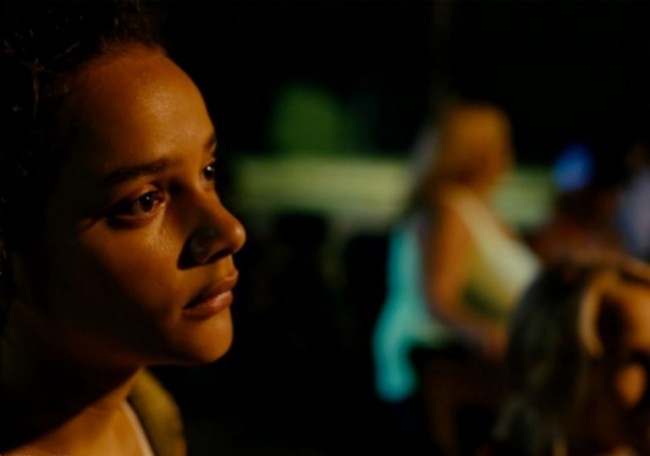 American Honey (Andrea Arnold) All this function leads to finely detailed form: a lengthy but never laborious journey that embraces small and smaller towns and features both young and old through the lens of a foreigner’s eye and a lover’s gleeful delectation. There’s drink and drugs and sex. The attractions between characters are shambolic and narcotic, but Arnold’s eye is hardly lewd. Even the most fraught scene, an intimacy-for-pay interlude in an oil field, is lit by a juddering pyre of well runoff that rises more like the dead wrath of a silent god than a sexual force. The renegade, roistering, song-heavy result ranges from moments of emotional vehemence to tender delicacy. Review.
American Honey (Andrea Arnold) All this function leads to finely detailed form: a lengthy but never laborious journey that embraces small and smaller towns and features both young and old through the lens of a foreigner’s eye and a lover’s gleeful delectation. There’s drink and drugs and sex. The attractions between characters are shambolic and narcotic, but Arnold’s eye is hardly lewd. Even the most fraught scene, an intimacy-for-pay interlude in an oil field, is lit by a juddering pyre of well runoff that rises more like the dead wrath of a silent god than a sexual force. The renegade, roistering, song-heavy result ranges from moments of emotional vehemence to tender delicacy. Review.
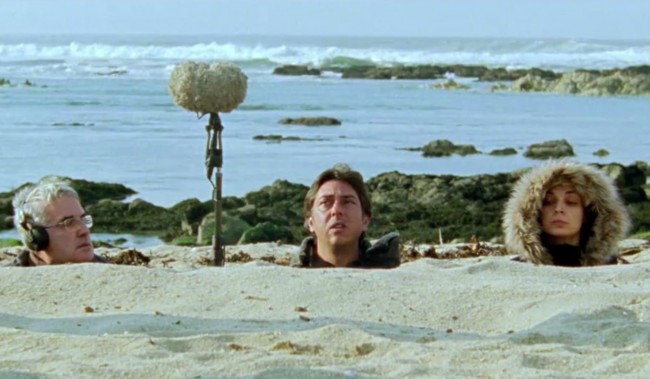 Arabian Nights (Miguel Gomes) An unintentional trilogy of fiction, documentary, satire, comedy, ridiculous, ridicule, plea for help, a dagger in the eye of the E. U., etc. Former film critic Miguel Gomes is one of the most passionately inventive of European filmmakers getting their work to this side of the ocean.
Arabian Nights (Miguel Gomes) An unintentional trilogy of fiction, documentary, satire, comedy, ridiculous, ridicule, plea for help, a dagger in the eye of the E. U., etc. Former film critic Miguel Gomes is one of the most passionately inventive of European filmmakers getting their work to this side of the ocean.
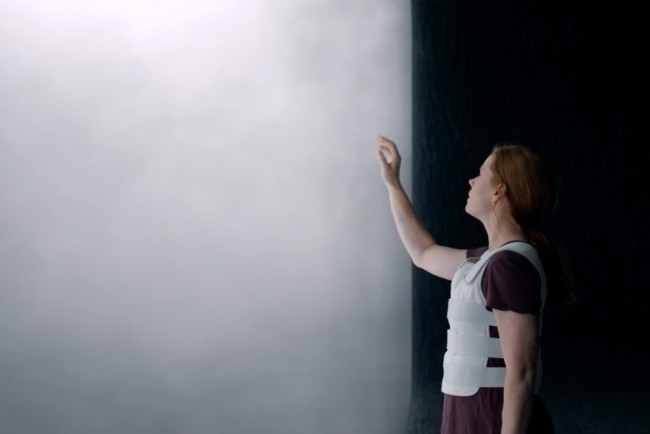 Arrival (Denis Villeneuve) Time after time.
Arrival (Denis Villeneuve) Time after time.
 Certain Women (Kelly Reichardt) Not so much an omnibus of three straightforward portraits, but a weave of moments in a defined location that overlap here and there. There are details as light as a feather, as quiet as quietest realization. Yes, there is quiet, but there is calm within moments of stress and strain and trying just to keep it together through the day in a rural world where you still have to deal with other people. There is beauty. Love ventured, love misplaced. And the manic bursts in several passages are masterpieces of tonal control. Review.
Certain Women (Kelly Reichardt) Not so much an omnibus of three straightforward portraits, but a weave of moments in a defined location that overlap here and there. There are details as light as a feather, as quiet as quietest realization. Yes, there is quiet, but there is calm within moments of stress and strain and trying just to keep it together through the day in a rural world where you still have to deal with other people. There is beauty. Love ventured, love misplaced. And the manic bursts in several passages are masterpieces of tonal control. Review.
Edge Of Seventeen (Kelly Fremon Craig) When James L. Brooks produced a new writer-director hoping to surpass John Hughes for a new generation. Plus, the keen exasperation and vital timing of Hailee Steinfeld. Steinfeld interview.
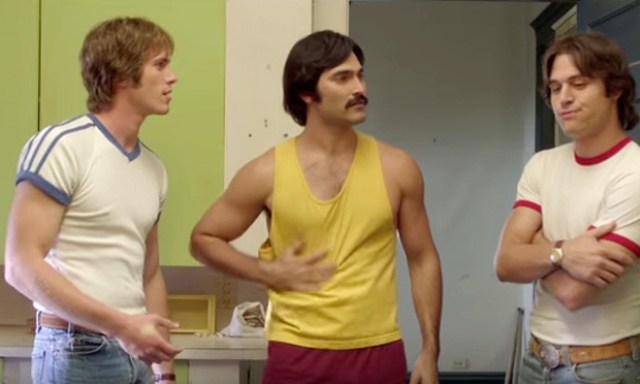 Everybody Wants Some!! (Richard Linklater) Pleasingly perverse in many ways, including the fact that the only baseball scene is deep into the last third of the movie. As Linklater has pointed out, when he thinks about when he played college ball, he thinks of what we see on screen between the teammates, not what happened on any diamond. And, there’s lots of chat as ears, as would be expected, get genially chewed. Review.
Everybody Wants Some!! (Richard Linklater) Pleasingly perverse in many ways, including the fact that the only baseball scene is deep into the last third of the movie. As Linklater has pointed out, when he thinks about when he played college ball, he thinks of what we see on screen between the teammates, not what happened on any diamond. And, there’s lots of chat as ears, as would be expected, get genially chewed. Review.
 Evolution (Lucile Hadžihalilović) Who knew we’d come this far? [Review coming 1/25.]
Evolution (Lucile Hadžihalilović) Who knew we’d come this far? [Review coming 1/25.]
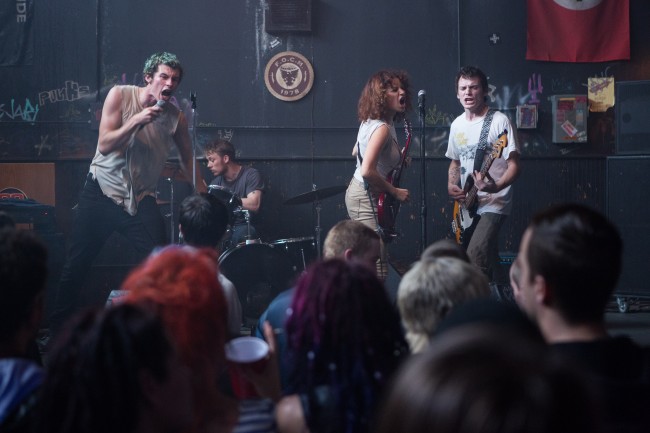 Green Room (Jeremy Saulnier). Nazi punks fuck off! Interview.
Green Room (Jeremy Saulnier). Nazi punks fuck off! Interview.
Hermia and Helena (Matías Piñeiro) But, soft! what light!
Henry Gamble’s Birthday Party (Stephen Cone) Cone has been articulate in his admiration for American masters of the ensemble comedy-drama, not limited to Jonathan Demme, Robert Altman and Gregg Araki, and in Henry Gamble’s Birthday Party, he wears influence lightly and well. The latest from the Chicago-based filmmaker is an ensemble piece that assuredly demonstrates maturity can be found in the citing of questions as much as the unfurling of answers, a formulation as suited to the filmmaking as to the characters we meet in one location across one long day as a preacher’s son celebrates his seventeenth birthday with a pool party. Review.
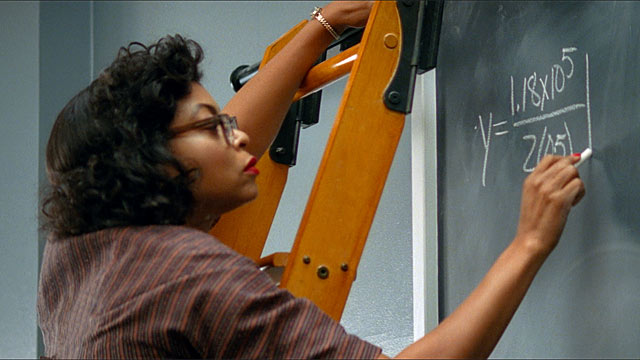 Hidden Figures (Theodore Melfi)
Hidden Figures (Theodore Melfi)
High-Rise (Ben Wheatley) The hoving building is Brutalist architecture, asserting itself against dusky sky, one of several towers in some sort of outlands. It’s a claustrophobic world, a kind few filmmakers make the strenuous effort required to fabricate, a world not our own. (“Sometimes he found it hard not to believe they were living in a future that had not taken place,” a bit of narration muses.) Each detail is calculated and sinister, down to uniform fonts for the many conveniences and appurtenances of the exclusive apartments-cum-barracks-cum-bunkers, spaces William S. Burroughs might have savored for hard, heavy presence. Raucous shambles await in this drunken bloody nightmare, “Lord of the Flies” for grown-ups gamboling through deliciously decadent decors. Moments of brief pastoral prettiness have their flipside: if there is a moon above, there will be guttering candlelight and screams below. Review.
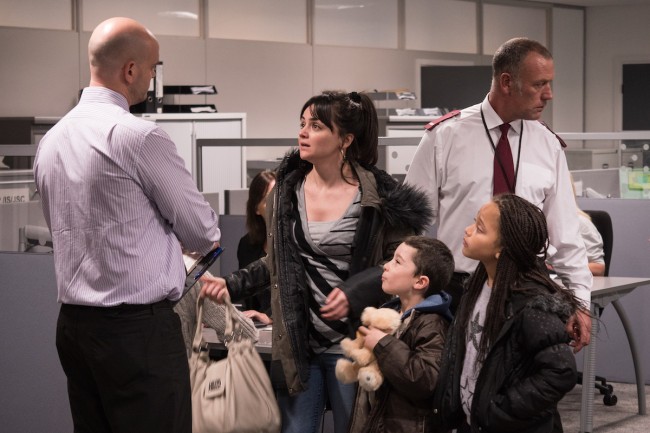 I, Daniel Blake (Ken Loach) Review with upcoming Chicago release.
I, Daniel Blake (Ken Loach) Review with upcoming Chicago release.
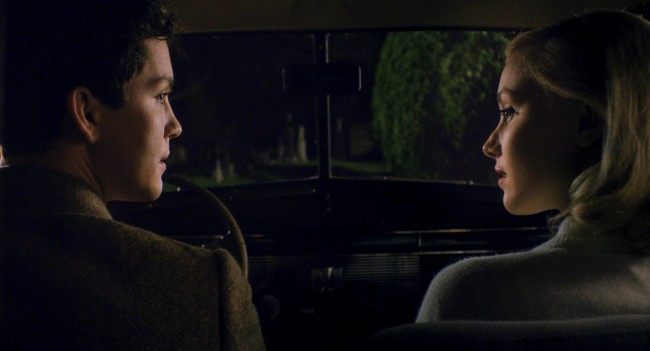 Indignation (James Schamus) Masterful miniature: Gentle, not genteel, bristling but not bursting, Schamus’ elegiac adaptation of Roth’s twenty-ninth novel embraces the consequences of trashed innocence and impossible love, the simplicity of gestures and the complexity of consequence. Review.
Indignation (James Schamus) Masterful miniature: Gentle, not genteel, bristling but not bursting, Schamus’ elegiac adaptation of Roth’s twenty-ninth novel embraces the consequences of trashed innocence and impossible love, the simplicity of gestures and the complexity of consequence. Review.
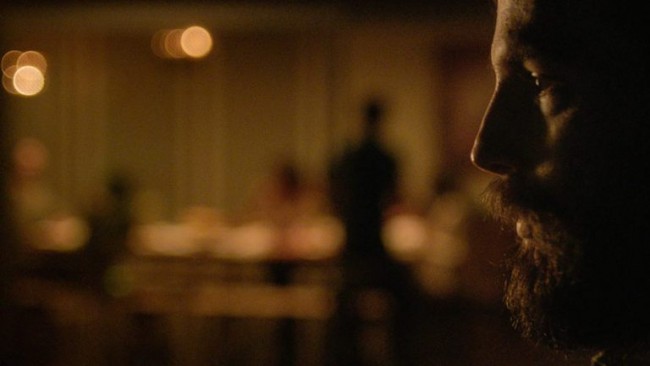 The Invitation (Karyn Kusama)There’s a whiff of blood in the air, and indeed, the lighting of the well-appointed house tends to lend the color of clot and stain to each new passage. It’s piss-elegance crying out to be trashed. (And like any dinner party set in the Hills, the cell service is conveniently iffy.) The intelligence Kusama applies to the most basic psychological twists impresses, and there are also several gratifying curveballs. Patience. So much patience. So much return. It’s sweet catharsis. (With sound alone, the gorgeous final shot indicates a world outside the frame, voices pitched, sirens awail, frenzied, too.) Review.
The Invitation (Karyn Kusama)There’s a whiff of blood in the air, and indeed, the lighting of the well-appointed house tends to lend the color of clot and stain to each new passage. It’s piss-elegance crying out to be trashed. (And like any dinner party set in the Hills, the cell service is conveniently iffy.) The intelligence Kusama applies to the most basic psychological twists impresses, and there are also several gratifying curveballs. Patience. So much patience. So much return. It’s sweet catharsis. (With sound alone, the gorgeous final shot indicates a world outside the frame, voices pitched, sirens awail, frenzied, too.) Review.
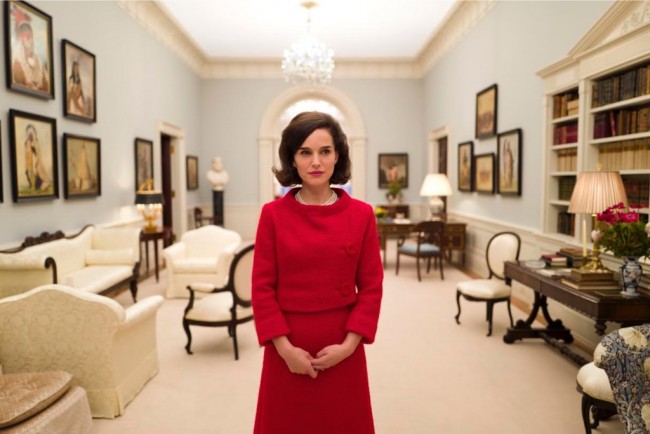 Jackie (Pablo Larraín) Dazed yet undaunted, grief-stricken but determined, genteel yet steely, Jackie is the role Natalie Portman was born to embody, swaddled in a brilliant skin of a score by Mica Levi. The twenty-nine-year-old classically trained experimental composer’s music, like her work for Jonathan Glazer’s Under the Skin, is luxurious yet unnerving, sometimes cacophonous, other times disordered, and nothing less than lovely, even thrilling in its own right, but also piercingly, disarmingly subjective to the trauma onscreen. Portman indicates edginess at any doubt of Jackie’s intelligence or her resolve to seal “Jack”’s legacy. Her Jackie is brittle yet bristling. Review.
Jackie (Pablo Larraín) Dazed yet undaunted, grief-stricken but determined, genteel yet steely, Jackie is the role Natalie Portman was born to embody, swaddled in a brilliant skin of a score by Mica Levi. The twenty-nine-year-old classically trained experimental composer’s music, like her work for Jonathan Glazer’s Under the Skin, is luxurious yet unnerving, sometimes cacophonous, other times disordered, and nothing less than lovely, even thrilling in its own right, but also piercingly, disarmingly subjective to the trauma onscreen. Portman indicates edginess at any doubt of Jackie’s intelligence or her resolve to seal “Jack”’s legacy. Her Jackie is brittle yet bristling. Review.
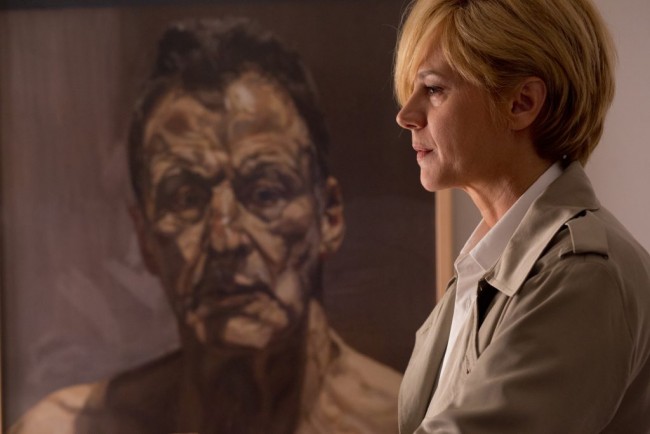 Julieta (Pedro Almodóvar) The hush of Julieta is masterful, a nonlinear labyrinth that is nonetheless a continuum, a sweep of memory and regret, of youth and middle age, of the responsibilities of a mother and a long-lost daughter to one another.
Julieta (Pedro Almodóvar) The hush of Julieta is masterful, a nonlinear labyrinth that is nonetheless a continuum, a sweep of memory and regret, of youth and middle age, of the responsibilities of a mother and a long-lost daughter to one another.
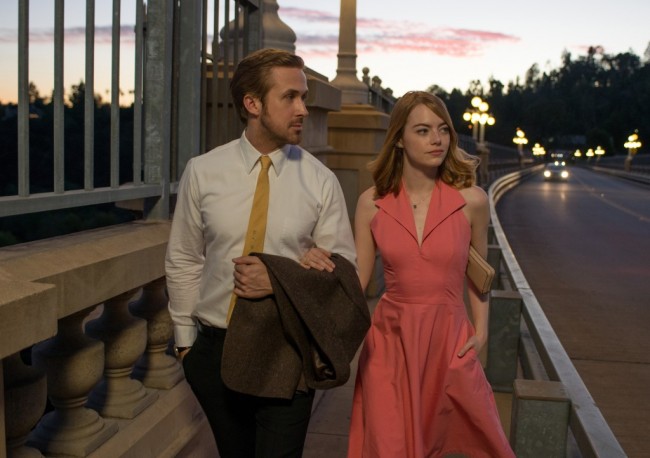 La La Land (Damien Chazelle) Singing, dancing, dreaming, scheming, loving, losing, holding dear: Chazelle’s third feature is a singing-dancing dreamy yet melancholy pastiche of musicals past and perhaps even a precursor of musicals yet to come. There’s a plot, but it’s the dance we all know all too well: lovers on the brink, girl meets boy, boy pursues girl, girl gets away, boy goes away, love comes and goes. Back to one, and repeat. And set in a timeless if contemporary Los Angeles, shot largely during the brief light and bold colors just past sunset known as “golden hour” that’s as fleeting as a stolen kiss. Interview.
La La Land (Damien Chazelle) Singing, dancing, dreaming, scheming, loving, losing, holding dear: Chazelle’s third feature is a singing-dancing dreamy yet melancholy pastiche of musicals past and perhaps even a precursor of musicals yet to come. There’s a plot, but it’s the dance we all know all too well: lovers on the brink, girl meets boy, boy pursues girl, girl gets away, boy goes away, love comes and goes. Back to one, and repeat. And set in a timeless if contemporary Los Angeles, shot largely during the brief light and bold colors just past sunset known as “golden hour” that’s as fleeting as a stolen kiss. Interview.
Lemonade (Beyoncé, Jonas Åkerlund, Kahlil Joseph, Melina Matsoukas, Dikayl Rimmasch, Mark Romanek, Todd Tourso) Action film: form and function.
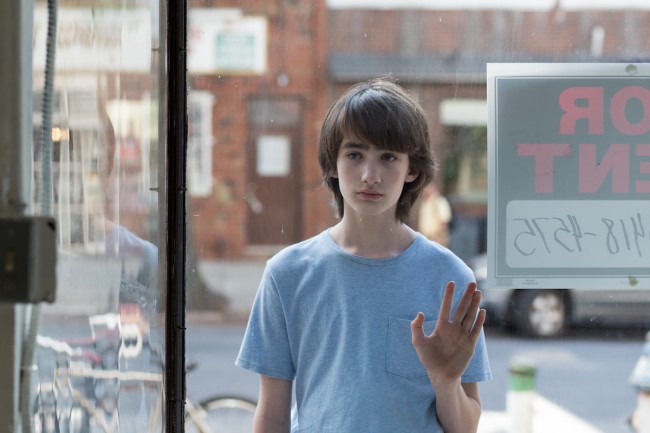 Little Men (Ira Sachs) Sachs’ mesmerizing movies are quiet yet restive, compact yet hardly terse. Questions like, “what is family?” and “what is money?” are dramatized with delicate, elusive craft through the handiwork of craftspeople doing what they do best. It’s not only the screenplay by Sachs and Mauricio Zacharias. It’s the playful yet wary score by Dickon Hinchliffe. Production design (Alexandra Schaller) and costume design (Eden Miller) that suggest summer, in neon-assertive colors by day, falling off to rust red and then in the classic apartment’s fall of crepuscular dusk into shadow. Simple, loose frames that use a slightly longer focal length to bring near and far together, as drawn by cinematographer Oscar Durán. And Sachs’ customary sound designer, Damian Volpe, insinuating, then insisting on the aural swaddle of a borough ever in motion, the quick conflict of bodies in proximity. Review.
Little Men (Ira Sachs) Sachs’ mesmerizing movies are quiet yet restive, compact yet hardly terse. Questions like, “what is family?” and “what is money?” are dramatized with delicate, elusive craft through the handiwork of craftspeople doing what they do best. It’s not only the screenplay by Sachs and Mauricio Zacharias. It’s the playful yet wary score by Dickon Hinchliffe. Production design (Alexandra Schaller) and costume design (Eden Miller) that suggest summer, in neon-assertive colors by day, falling off to rust red and then in the classic apartment’s fall of crepuscular dusk into shadow. Simple, loose frames that use a slightly longer focal length to bring near and far together, as drawn by cinematographer Oscar Durán. And Sachs’ customary sound designer, Damian Volpe, insinuating, then insisting on the aural swaddle of a borough ever in motion, the quick conflict of bodies in proximity. Review.
The Lobster (Yorgos Lanthimos) Perky comedy turns darker, as it will in the Greek writer-director’s films, and then threatening, and eventually, clinically factual. The moments of tenderness and weirdness are the movie’s highest, most Buñuelesque highs, while it’s also one of the most inspired movies of late about loneliness, steeped in loneliness, hopeful of embrace. Review.
Love & Friendship (Whit Stillman) Stillman’s Lady Susan may have begun as Jane Austen’s, and he may have transformed her into a vessel for Kate Beckinsale’s liquid lashings of the tongue, but Lady Susan is of no time, and of this time, and the most modern of characters, as in his earlier near-period pieces. There’s a Lady Susan just down the block, around that corner. Although a “calumny” is invoked, “A degree of captivating deceit” is described, as well as a “flowing spigot of malice and calumny” and the word “pride” is properly adjudicated at least thrice. And who has not wanted to announce, “I can’t support reproaches!” Stillman interview.
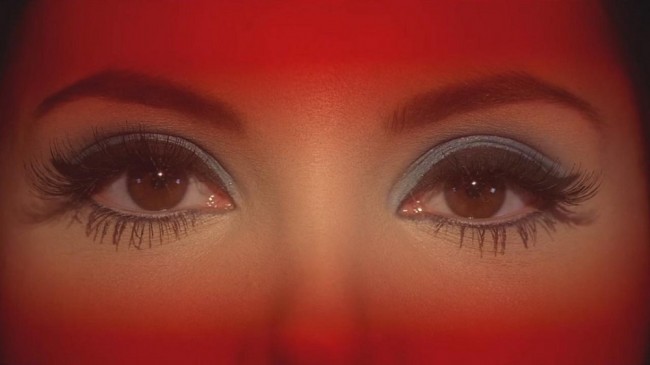 The Love Witch (Anna Biller) Biller’s blissfully strange widescreen appropriation of the trappings of sexploitation, horror and high art, is a rubicund marvel, and a deadpan madhouse comedy. Comparisons could be drawn the day long, each as wild as the next. Red and scarlet and ruby and pink and flushed cheeks dress the settings while wildly imaginative costumes rise beyond camp into plainly stated delirium. Biller stuffs lifetimes of material into her story, too, a nearly indescribable amalgam that rises from budding farrago to fully-flowered fever dream. Review.
The Love Witch (Anna Biller) Biller’s blissfully strange widescreen appropriation of the trappings of sexploitation, horror and high art, is a rubicund marvel, and a deadpan madhouse comedy. Comparisons could be drawn the day long, each as wild as the next. Red and scarlet and ruby and pink and flushed cheeks dress the settings while wildly imaginative costumes rise beyond camp into plainly stated delirium. Biller stuffs lifetimes of material into her story, too, a nearly indescribable amalgam that rises from budding farrago to fully-flowered fever dream. Review.
Mia Madre (Nanni Moretti)This slipstream of narrative, of subjective consciousness, is the most adroit of Moretti’s most recent approaches to psychological play. Margherita is a whole human whose being encompasses weariness, sadness, impatience and fear of losing her mother. And “Mia Madre” is a full-to-heartbursting film, with extremes of joy and sorrow in a small, assured yet teeming narrative. The weave of relationships is ever tested, ever illuminated. Review.
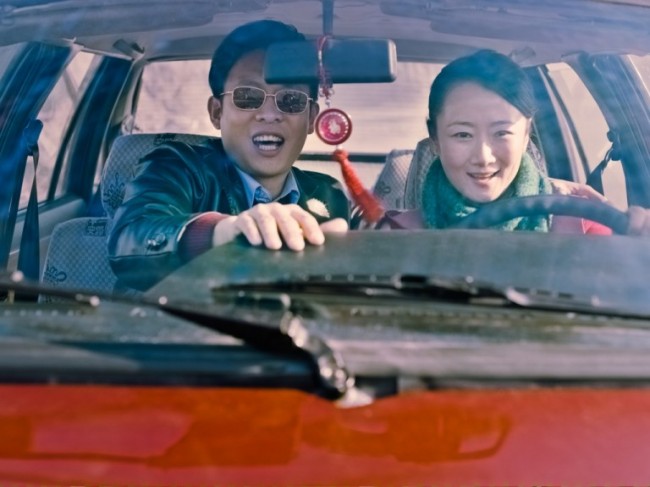 Mountains May Depart (Jia Zhangke) However wide the screen expands, there is a lonely soul off to the side. At the end, snow falls. Birds and the sea call out. “Go West” plays. It’s a thundercrack. Review.
Mountains May Depart (Jia Zhangke) However wide the screen expands, there is a lonely soul off to the side. At the end, snow falls. Birds and the sea call out. “Go West” plays. It’s a thundercrack. Review.
 The Neon Demon (Nicolas Winding Refn) Minimalism and maximalism, a languorous rush of images and wall of music hangered onto a fairytale of an underage girl (Elle Fanning) who arrives in Los Angeles with hopes of becoming a model and then falls in with a perverse raft of archetypes atop waves of deep crimson imagery. Someone could look at this film and say, ‘These are only tableaux! Nothing’s going on.” But beauty is in the eye of the beholder: is all the sound and fury, the design and décor, the understated acting, is that…cinema? “I really like the way that you call it tableaux,” Refn says, leaning into his flattery, “because you’re the only one that picked up on that.”Refn interview.
The Neon Demon (Nicolas Winding Refn) Minimalism and maximalism, a languorous rush of images and wall of music hangered onto a fairytale of an underage girl (Elle Fanning) who arrives in Los Angeles with hopes of becoming a model and then falls in with a perverse raft of archetypes atop waves of deep crimson imagery. Someone could look at this film and say, ‘These are only tableaux! Nothing’s going on.” But beauty is in the eye of the beholder: is all the sound and fury, the design and décor, the understated acting, is that…cinema? “I really like the way that you call it tableaux,” Refn says, leaning into his flattery, “because you’re the only one that picked up on that.”Refn interview.
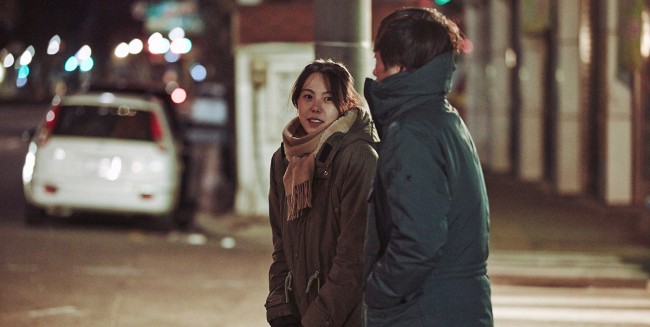 Right Now, Wrong Then (Hong Sang-soo) Begin again.
Right Now, Wrong Then (Hong Sang-soo) Begin again.
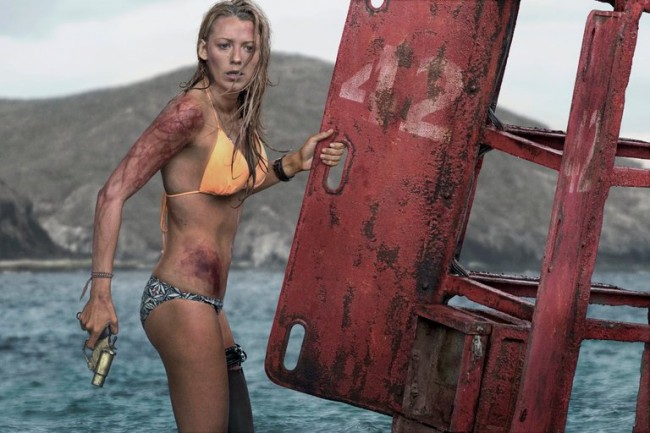 The Shallows (Jaume Collet-Serra) On the overnight flight, I began to fall asleep, but I was transfixed by his survivalist shark suspenser. Simple craft that had me struggling to keep my eyes open: throw a strong woman (Blake Lively) in the sea and see her swim or drown. Akin to movies like Joe Carnahan’s The Grey and Alfonso Cuarón’s Gravity, The Shallows is aswim with surfaces and suggestiveness and elemental filmmaking craft in the service of survival. Eighty-six minutes, and nothing wrong with it, that suggests there’s a place for self-effacing filmmaking in the greater marketplace. Essay.
The Shallows (Jaume Collet-Serra) On the overnight flight, I began to fall asleep, but I was transfixed by his survivalist shark suspenser. Simple craft that had me struggling to keep my eyes open: throw a strong woman (Blake Lively) in the sea and see her swim or drown. Akin to movies like Joe Carnahan’s The Grey and Alfonso Cuarón’s Gravity, The Shallows is aswim with surfaces and suggestiveness and elemental filmmaking craft in the service of survival. Eighty-six minutes, and nothing wrong with it, that suggests there’s a place for self-effacing filmmaking in the greater marketplace. Essay.
Sieranevada (Cristi Puiu) Domestic life, Bucaresti-style. Two short films by Puiu.
Silence (Martin Scorsese) The few visual flourishes startle: most of the style is stripped, simplified, distilled in the contents of frames, in the duration of shots. Review.
 Sully (Clint Eastwood) The job of work. Eastwood applying his craft to a story about applying learned, classical craft. Muscle memory. Plus, “Birds.” “Birds.” And “Birds.” “Birds.” And that final freeze-frame…
Sully (Clint Eastwood) The job of work. Eastwood applying his craft to a story about applying learned, classical craft. Muscle memory. Plus, “Birds.” “Birds.” And “Birds.” “Birds.” And that final freeze-frame…
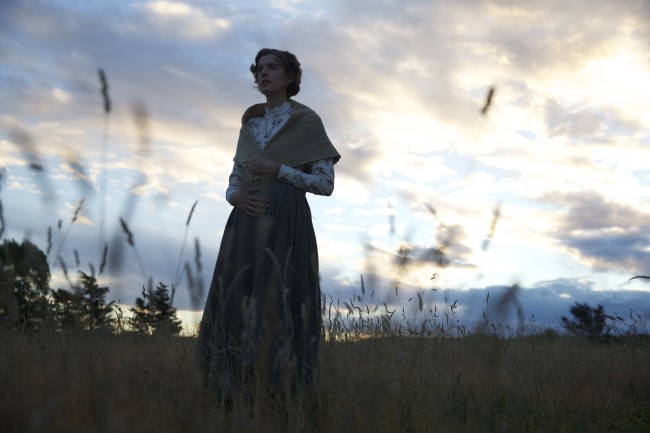 Sunset Song (Terence Davies) A sustained traveling shot, taken by thin morning light after a battle, of an ordinary passage of mud and remnants of a battlefield, abandoned, after men were taken and their bodies taken away: a survey of gulleys and blastholes and barbed wire coiled between X-shaped crosses of rude wood; cart wheels with no cart; as we look down from only feet above, gliding, wandering, observing and accompanied, of course, by a tender Scottish song, “a melancholy air,” the singer’s voice rich with masculine sorrow. The film’s stern, stoic surface parts as the story closes, with Deyn allowing the welling of Chris’ emotions to suffuse the glow of the story’s last embers. Review.
Sunset Song (Terence Davies) A sustained traveling shot, taken by thin morning light after a battle, of an ordinary passage of mud and remnants of a battlefield, abandoned, after men were taken and their bodies taken away: a survey of gulleys and blastholes and barbed wire coiled between X-shaped crosses of rude wood; cart wheels with no cart; as we look down from only feet above, gliding, wandering, observing and accompanied, of course, by a tender Scottish song, “a melancholy air,” the singer’s voice rich with masculine sorrow. The film’s stern, stoic surface parts as the story closes, with Deyn allowing the welling of Chris’ emotions to suffuse the glow of the story’s last embers. Review.
 Things To Come (Mia Hansen-Løve)Huppert’s face in that second betrays her rationalization of a life suddenly alone. It’s performance, habitation, wholly apart from acting. Hansen-Løve watches for those instants, brief as thoughts, in all her pictures. These two are a match made in cinema. A further fascination is how Hansen-Løve and Huppert alternate Nathalie’s moods: she’s hardly a crumpled flower, quickly vexed and protective of her dignity. Sunlight illuminates nearly every frame: Nathalie hides in no shadow. Review.
Things To Come (Mia Hansen-Løve)Huppert’s face in that second betrays her rationalization of a life suddenly alone. It’s performance, habitation, wholly apart from acting. Hansen-Løve watches for those instants, brief as thoughts, in all her pictures. These two are a match made in cinema. A further fascination is how Hansen-Løve and Huppert alternate Nathalie’s moods: she’s hardly a crumpled flower, quickly vexed and protective of her dignity. Sunlight illuminates nearly every frame: Nathalie hides in no shadow. Review.
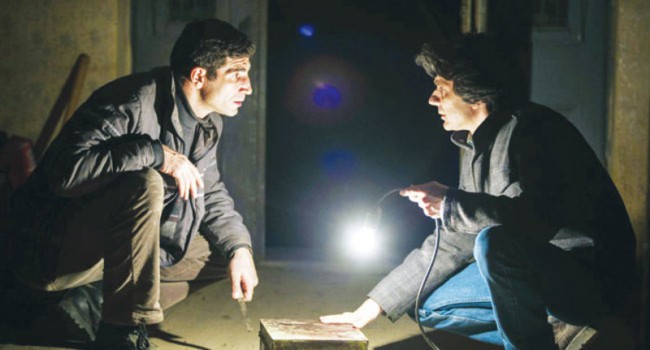 The Treasure (Corneliu Porumboiu) Think less. Less. Now slide into a sly, funny, telling, tiny ending and a song by Laibach. Smile.
The Treasure (Corneliu Porumboiu) Think less. Less. Now slide into a sly, funny, telling, tiny ending and a song by Laibach. Smile.
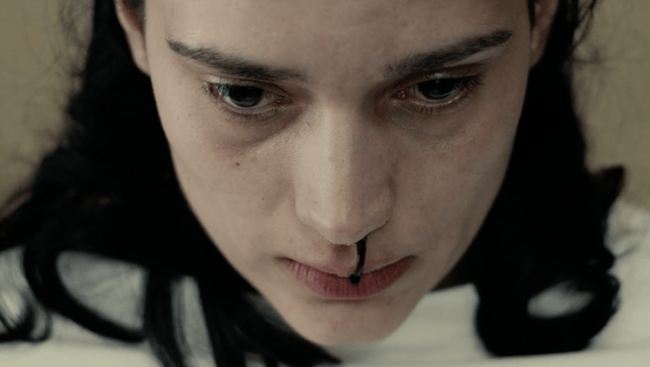 Viktoria (Maya Vitkova) A girl is a woman is a country in the bold thunderclap of Bulgarian filmmaker Maya Vitkova’s magical mixed-genre widescreen debut feature. Review.
Viktoria (Maya Vitkova) A girl is a woman is a country in the bold thunderclap of Bulgarian filmmaker Maya Vitkova’s magical mixed-genre widescreen debut feature. Review.
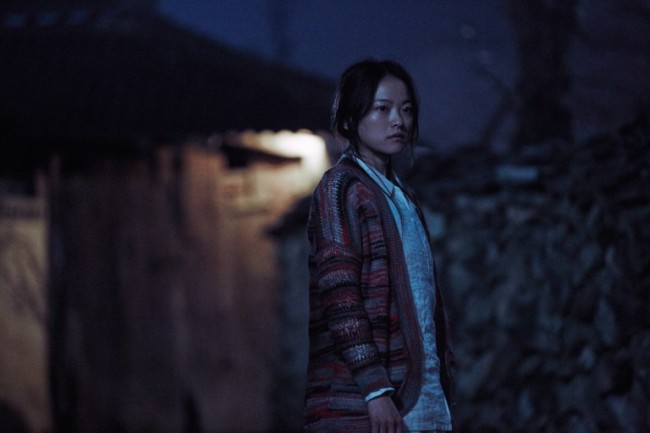 The Wailing (Na Hong-jin) Na saunters across a two-and-a-half-hour running time to allow us to settle into the nightmarish landscape before, well, kinda-sorta, the zombie Day of Reckoning is upon us. And what a lovely apocalypse it is, with its succession of gallery-worthy photographic finery. The Wailing is splendidly controlled but also enthrallingly bonkers: many movies and myths might clang in your mind as you watch, but there’s hardly a moment you’d dwell on those thoughts, because Na is prompting other questions: the nature of evil, can it be known, is it knowable? Why would you want to approach its nature? Chilly non-answers await. Review.
The Wailing (Na Hong-jin) Na saunters across a two-and-a-half-hour running time to allow us to settle into the nightmarish landscape before, well, kinda-sorta, the zombie Day of Reckoning is upon us. And what a lovely apocalypse it is, with its succession of gallery-worthy photographic finery. The Wailing is splendidly controlled but also enthrallingly bonkers: many movies and myths might clang in your mind as you watch, but there’s hardly a moment you’d dwell on those thoughts, because Na is prompting other questions: the nature of evil, can it be known, is it knowable? Why would you want to approach its nature? Chilly non-answers await. Review.
Wiener-Dog (Todd Solondz) “Heel! Heel! Heel! God-dammit! Heel! Motherfucker, heel. Heel, motherfucker! Heel, motherfucker!” Interview.
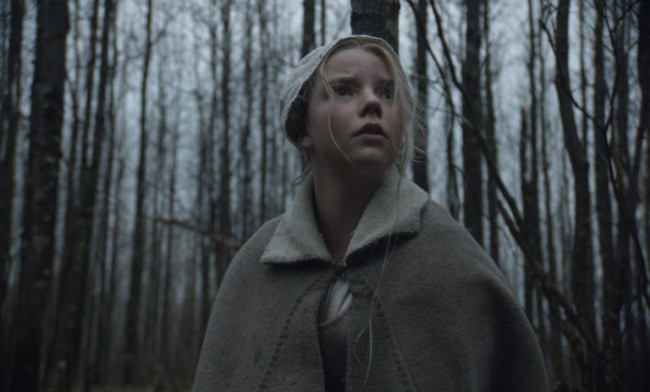 The Witch (Robert Eggers) The atmosphere bristles: this is The Revenant with stakes, higher stakes than the accursed soul of a single man seeking vengeance. But like The Revenant, there is an overarching sensation that the land resents, resists the incursion of these parties, and the land will have its way with them, at least until the machines leave tracks and the light of industry flickers on and makes the Darkness merely “dark.” Review.
The Witch (Robert Eggers) The atmosphere bristles: this is The Revenant with stakes, higher stakes than the accursed soul of a single man seeking vengeance. But like The Revenant, there is an overarching sensation that the land resents, resists the incursion of these parties, and the land will have its way with them, at least until the machines leave tracks and the light of industry flickers on and makes the Darkness merely “dark.” Review.
 Zootopia (Byron Howard, Rich Moore)
Zootopia (Byron Howard, Rich Moore)






